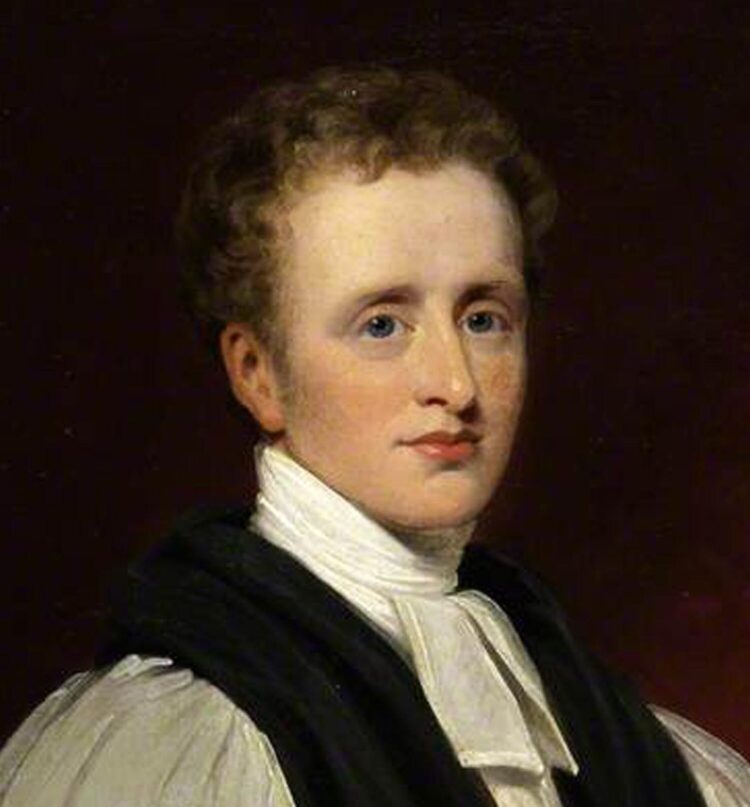
Today’s Leader of Faith
REGINALD HEBER
Home Call : 3 April 1826
Missionary to India, Bishop, Hymn-Writer, Scholar, Poet, Traveller
Reginald Heber (1783–1826) was an English Bishop. He is best known for his hymns, including “Holy, Holy, Holy! Lord God Almighty!” and “Brightest and Best” which are widely sung till today in all the churches irrespective of the denomination across the world. He served as the Bishop of Calcutta from 1823 until his death in 1826. During his short tenure, he worked tirelessly to strengthen Christian missions in India, emphasizing education and evangelism. Upon arrival, he addressed challenges such as the stalled development of Bishop’s College, successfully raising funds, securing additional land grants, and reviving its construction. In June 1824, he ordained the first native Indian deacon under a recent Act of Parliament. He documented his travels and experiences in India in his book ‘Narrative of a Journey through the Upper Provinces of India, from Calcutta to Bombay’, 1824–1825, which provided valuable insights into Indian society, culture, and Christian missionary activities. His hymns remain widely sung in churches today.
Heber was born on 21 April 1783 in Malpas, Cheshire. At the age of eight, he began his education at Whitchurch Grammar School before moving to Bristow’s private school in Neasden, which prepared students for Oxford or Cambridge. In October 1800, he entered Brasenose College, Oxford, where he gained recognition as a Romantic poet. Following the death of his father in 1804, Heber inherited the parish of St. Luke in Hodnet. Though he initially delayed ordination, he eventually took up the role, serving as a country parson for 16 years. During this time, he continued writing hymns and literary works. At Oxford, he excelled as a thinker, poet, and orator, earning a fellowship at All Souls College. Before becoming Bishop he travelled to many European countries.
Heber became the rector of Hodnet in 1807, balancing parish duties with literary and theological work. He was an advocate for overseas missions and became a prominent hymn writer, composing many classics. In 1823, he was appointed Bishop of Calcutta, overseeing a vast diocese covering India, Ceylon, Australia, and parts of Africa. He worked to strengthen Bishop’s College, promoted native clergy, and travelled extensively to support missions. As the Bishop of Calcutta, He undertook extensive journeys from June 1824 to October 1825 to Northern India including Bengal, Varanasi, Allahabad, Delhi, Rajputana culminating in Bombay, visiting churches, mission stations, and schools to oversee the work of Christian missions. He consecrated churches, conducted bilingual Holy Communion services, and observed Hindu and Sikh religious practices. In Benares, he led a well-attended service with both Christians and Hindus. His journey extended to Ceylon, where he toured key cities before returning to Calcutta. He delivered sermons in India, addressing both British and Indian congregations. His Sermons ‘Preached in India’ were later compiled and published.
Heber sought to report his observations in India to Governor General Lord Amherst and criticized the East India Company’s treatment of Indians. Despite administrative and ministerial responsibilities, he embarked on a tour to Southern India in 1826 to address caste issues. On April 3, after a church service in Trichinopoly, Tamil Nadu he died suddenly, likely from cold-water shock. His death was widely mourned, with memorials erected in India and Britain, including a sculpture in St. Paul’s Cathedral. The Anglican Church of Canada honors him annually on April 4.
